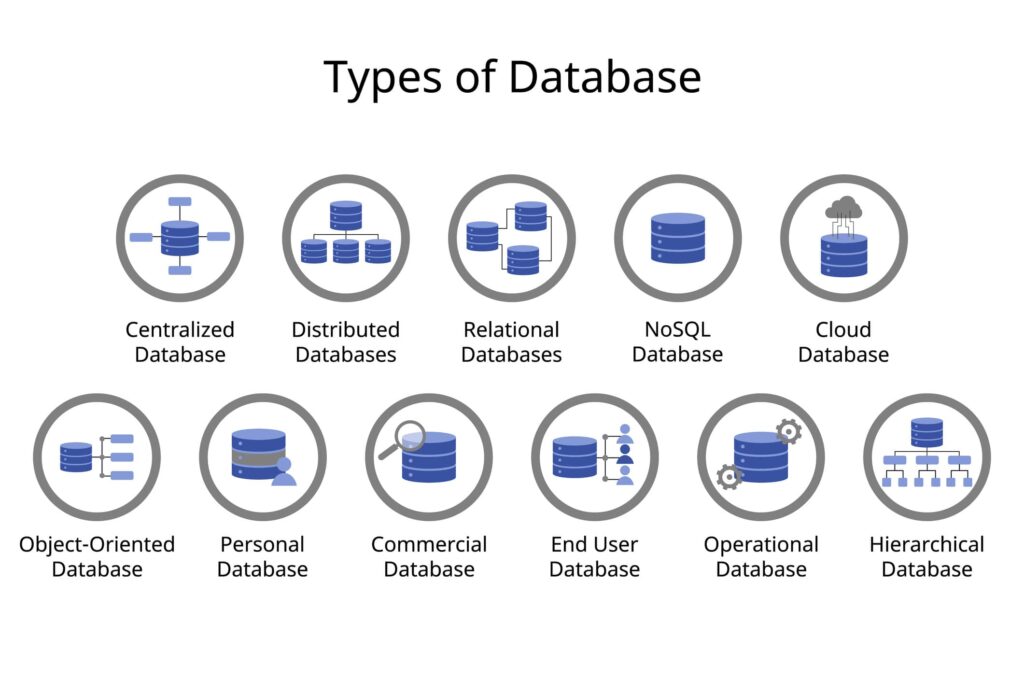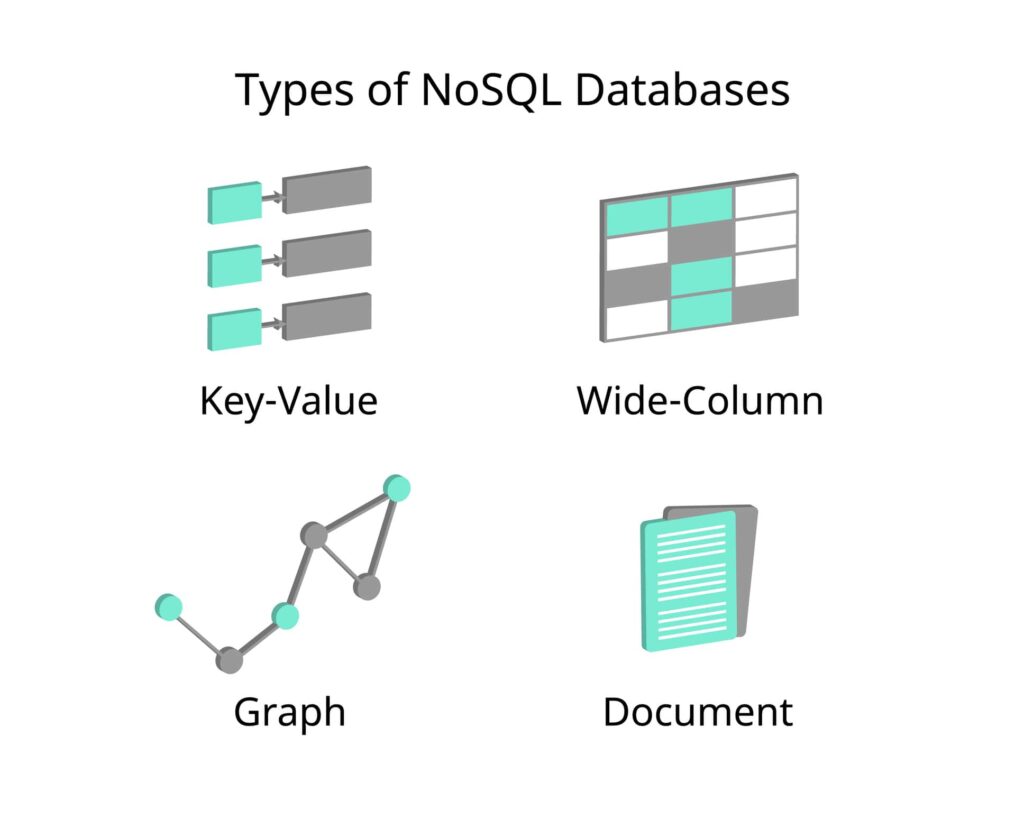Choosing the right database often comes down to MongoDB vs MySQL. This article will help you understand the core differences in data structure, scalability, and use cases. Whether you need a relational database for complex transactions or a NoSQL database for flexible data storage, we’ve got you covered.
Key Takeaways
- MySQL is a relational database management system ideal for structured data and complex relationships, ensuring data integrity and reliability.
- MongoDB is a NoSQL database designed for unstructured data, offering flexibility and scalability with a schemaless architecture, making it suitable for applications needing rapid data handling.
- Combining MySQL and MongoDB allows organizations to optimize their data management capabilities by utilizing the strengths of both databases for structured and unstructured data needs. Data modeling is a critical skill for developers to manage and analyze data within these database systems effectively.
Introduction to Database Management Systems
Database Management Systems (DBMS) are essential software systems that facilitate database creation, maintenance, and manipulation. A database, in essence, is a structured collection of data that can be easily accessed, managed, and updated. DBMS provides a systematic way to store, retrieve, and manage data, ensuring it remains organized and controlled.
These systems are crucial for handling large volumes of data efficiently, enabling businesses and applications to perform complex queries, maintain data integrity, and ensure security. By leveraging DBMS, organizations can streamline their data management processes, making handling everything from simple data entry to complex data analysis easier.
Overview of Relational and NoSQL Databases
Databases can be broadly categorized into two main types: relational and NoSQL. Relational databases, such as MySQL, utilize a structured query language (SQL) to manage and query data. They store data in tables with well-defined schemas, where each table consists of rows and columns.
Relationships between tables are established using keys, which help maintain data integrity and enable complex queries across multiple tables. This structured approach makes relational databases ideal for applications requiring precise data management and complex transactions.
On the other hand, NoSQL databases, like MongoDB, are designed to handle large amounts of unstructured or semi-structured data. They store data in various formats, including key-value pairs, documents, graphs, and column-family stores.
Unlike relational databases, NoSQL databases do not require a fixed schema, allowing for more flexible data models. This flexibility makes NoSQL databases well-suited for applications with dynamic data requirements, such as real-time analytics, content management systems, and IoT applications. NoSQL databases offer a robust alternative to traditional relational databases by accommodating diverse data types and providing scalable solutions.
Understanding MySQL and MongoDB
MySQL is a freely available relational database management system created by Oracle. Its purpose is to administer structured data that involves complex relationships, thereby making it apt for applications where preserving the integrity and dependability of data is essential. In MySQL, information is organized into rows and columns across tables based on a strict schema, ensuring data validation consistency. This relational database system thrives when tasked with managing structured information requiring intricate transactional processes.
Conversely, MongoDB represents a NoSQL database designed to cater to unstructured or loosely structured data while offering significant scalability potential. MongoDB stores data as JSON documents, presenting a flexible approach compared to the structured tabular format used by MySQL.
Diverging from MySQL’s methodology, MongoDB employs an architecture without fixed schemas. This permits adaptable storage solutions beyond rigid structures typically associated with traditional databases. Thanks to its agility in accommodation, MongoDB suits applications confronted with large datasets and those undergoing continuous evolution regarding their informational requirements—whereby documents resembling JSON formats provide varied structural flexibility, enhancing overall dynamic handling within the realm of databasing.
These two types of mainstream database management systems address distinct challenges regarding the stewardship of information: MySQL shines within domains dependent upon well-defined structure and elaborate transactions, whereas MongoDB stands out amidst environments that prioritize swift incorporation as well as volume variance among collected datasets—a distinction critical to determining an optimal choice amongst databases relative to specific operational objectives.
However, the limitations of scalability in a MySQL database system, primarily focusing on vertical scalability and read replication, can lead to performance issues in high-demand applications. In contrast, MongoDB’s more flexible and efficient scaling capabilities through sharded clusters and replica sets offer a robust solution for growing applications.
MySQL: Structured Data and Relational Databases
MySQL utilizes a relational structure to arrange data within tables, providing an ideal environment for applications that demand high levels of data accuracy and complex interrelations. By storing information in rows and columns within these tables, MySQL enables effective sorting and accessing of data. The adherence to a strict schema ensures consistency across the stored data while enforcing rules for validating this information.
Utilizing the client-server architecture for database access, the MySQL system operates with Structured Query Language (SQL) as its core mechanism for handling interactions with data. It employs standard SQL operations such as SELECT, UPDATE, INSERT, and DELETE to facilitate extensive control over both manipulation and extraction of database contents. This capability is particularly useful when engaging in sophisticated queries that span multiple tables—an essential feature required by numerous advanced business software solutions.
By embracing ACID properties—Atomicity, Consistency, Isolation Durability—MySQL offers dependable transaction processing crucial for maintaining precise records in scenarios where robustness is mandatory, like banking systems. Dealing with transactions involving several tables may lead to decreased performance due to read-write demands on different parts of the database. MySQL’s rigorous structuring and strong support mechanisms for transactions affirm it as a solid option when working with structured datasets.
Features and Benefits of MySQL
MySQL is a widely used relational database management system (RDBMS) known for its reliability, performance, and ease of use. Some of the key features and benefits of MySQL include:
- Support for Structured Query Language (SQL): MySQL uses SQL, a robust and standardized language for managing and querying relational databases. This allows for precise data manipulation and retrieval.
- Structured Data Storage: MySQL stores data in tables with well-defined schemas, ensuring consistency and integrity across the database. This structured approach is ideal for applications requiring complex transactions and data relationships.
- Relationships Between Tables: MySQL supports using keys to establish relationships between tables, enabling complex queries and data integrity.
- High Performance and Scalability: MySQL is designed to handle high volumes of transactions and large datasets efficiently. It offers various optimization techniques to enhance performance.
- Robust Security Features: MySQL includes access control, encryption, and other security measures to protect sensitive data and ensure that only authorized users can access the database.
- Wide Range of Tools and Applications: MySQL is supported by a vast ecosystem of tools and applications for database management, development, and optimization, making it a versatile choice for developers.
MongoDB: Unstructured Data and NoSQL Databases
MongoDB utilizes a format similar to JSON, offering data size and content variation flexibility. This adaptability makes MongoDB more adept at managing unstructured data than conventional relational databases that store structured data. MongoDB employs BSON (Binary JSON) to store its information, which supports an extensive range of data types. The absence of a predefined structure in this schemaless configuration encourages swift development cycles and iterations.
Due to the lack of a rigid schema, MongoDB is well-suited for applications that demand real-time analytics and handle big data, providing expedient processing capabilities. Its pliable architecture accepts semi-structured data without insisting on strict adherence to a fixed schema—a significant benefit for applications with dynamic or evolving informational requirements.
These permit flexible adjustment of database structures over time as they do not mandate uniformity across all stored records within individual collections—enabling considerable elasticity regarding how various forms of metadata are represented.
Due primarily to its inherent ability to accommodate large-scale variable datasets free from the limitations imposed by inflexible schemata and partial support for schemas, it streamlines retrieving stored entries.MongoDB is particularly fitting for software systems that manage substantial quantities of multifarious bits while eschewing stringent structural constraints typical when using traditional methods associated with the management thereof.
Key Differences Between MySQL and MongoDB
Several fundamental distinctions emerge when evaluating MySQL versus MongoDB, stemming from their inherent designs. The structured tables and fixed schema of MySQL afford explicit data relationships and validation checks, in contrast to MongoDB’s schemaless approach’s flexible and scalable nature.
While MySQL relies on a rigid structure with predefined schemas and tables, MongoDB offers a more flexible approach by storing data as JSON-like documents, allowing for varied and unstructured data formats.
The implications of these differences extend to aspects such as performance, scalability, query languages, and security features. These elements will be delved into in subsequent subsections. Additionally, having the same data across multiple MongoDB servers through the use of replica sets ensures high availability and disaster recovery, contrasting it with MySQL’s more limited scalability options.
Data Models and Schema Flexibility
MySQL employs a fixed database schema that necessitates establishing a predefined structure in line with the stored data, making schema migrations challenging as databases expand. The storage method for MySQL utilizes a tabular approach consisting of rows and columns, ensuring uniformity in data organization but sacrificing adaptability. While this stringent nature aids in maintaining data integrity, it may impede prompt adjustments to shifting needs concerning data.
Alternatively, MongoDB is built on a schemaless architecture that eliminates the need to set up schemas beforehand. This permits not only flexible storage options but also continuous evolution of structures without disrupting existing entries.
MongoDB stores its information within versatile JSON documents whose configurations are subject to alteration, enhancing its capacity to accommodate change swiftly. Such flexibility dramatically benefits quick development cycles and iterations, positioning MongoDB as an ideal solution for applications with fluid requirements about their underlying data.
Scalability and Performance
MongoDB enhances its capacity to handle extensive volumes of data by employing sharded clusters, which allow the spread of data over various servers. This approach to horizontal scalability is instrumental in managing substantial datasets and enables MongoDB to maintain robust write performance through functionalities like the insertMany() API. MongoDB delivers formidable read performance when it comes to fetching single documents, thanks in part to how its schema is structured and its indexing abilities.
In contrast, MySQL’s scalability strategy leans toward vertical expansion, typically necessitating bespoke engineering solutions for scaling past a singular server configuration. This can present difficulties as workloads expand. While MySQL performs admirably with intricate read operations that involve executing joins on indexed tables, this form of vertical scalability serves well for applications on a smaller scale. Still, it might not suffice under the pressures posed by massive-scale data handling requirements.
Horizontal vs. Vertical Scaling
Scaling is a critical consideration when choosing a database management system, and the approach to scaling can vary significantly between relational and NoSQL databases. Relational databases like MySQL typically use vertical scaling, which involves increasing the power of a single server (e.g., adding more CPU, RAM, or storage) to handle increased load. While vertical scaling can be effective for smaller-scale applications, it has limitations and can become costly as the demand grows.
In contrast, NoSQL databases like MongoDB employ horizontal scaling, which involves adding more servers to a cluster to distribute the load. This approach, known as sharding, allows MongoDB to handle large-scale applications more efficiently by spreading data across multiple servers. Horizontal scaling is often more cost-effective and easier to manage for applications with high scalability requirements.
In summary, relational databases such as MySQL are well-suited for applications that require structured data and complex transactions. In contrast, NoSQL databases like MongoDB are better suited for applications that need flexible schema designs and high scalability. By understanding the features and benefits of each type of database, developers can make informed decisions about the best database management system for their specific use case.
Query Language and Operations
MySQL employs the Structured Query Language (SQL), a robust and extensively utilized language for administrating SQL databases and relational databases. SQL is equipped to perform intricate queries, supports the execution of joins and manages interrelations between tables—a fundamental aspect of the relational database structure. This characteristic renders SQL exceptionally suitable for applications necessitating precise data manipulation and retrieval.
Conversely, MongoDB operates with its own MongoDB Query Language (MQL). MQL is tailored to navigate the variable schema of document-based information efficiently. It concentrates on document-centric queries while foregoing support for traditional foreign key constraints typical in structured query languages like SQL used by MySQL. Although this can streamline querying procedures when working with unstructured data, it implies that MongoDB adopts an alternative method in managing relationships within its dataset compared to methodologies applied by MySQL in handling similar tasks.
Security Features
MySQL incorporates various security features to safeguard user access and preserve sensitive data.
- It utilizes Access Control Lists (ACLs), which help make sure only authorized individuals have the ability to engage with the database.
- To protect information while it’s being transmitted, MySQL uses TLS/SSL encryption, thereby preserving its integrity and confidentiality.
- The database adheres to ACID compliance standards that guarantee dependable transactions and maintain consistency, creating a solid framework for protecting sensitive information.
Collectively, these elements significantly strengthen the safety protocols within MySQL databases.
Conversely, MongoDB adopts role-based access control, where users receive specific roles that define their level of permissions. This system enables more detailed regulation of what users can do inside the database.
For those using cloud services, MongoDB provides potent security mechanisms tailored towards such environments, including meticulous user authentication procedures as well as stringent controls on both data encryption and access management. Consequently, MongoDB is particularly adept at handling applications demanding high-level safeguards for securing critical data.
Best Use Cases for MySQL
MySQL is ideally suited for applications demanding structured data with high referential integrity, rendering it an excellent option for banking, inventory control, and corporate software sectors. The database’s capability to handle multi-row transactions bolsters data coherence and guarantees uniformity in operations—a vital feature for systems dealing with finance.
E-commerce platforms reap advantages from MySQL’s scalability and solid transaction support. It adeptly manages elements like product catalogs, customer dealings, and stock information, which are integral to online commerce businesses. Due to its relational database management system (RDBMS) and robust structured query language (SQL), MySQL ensures the stability and dependability these kinds of applications require.
Best Use Cases for MongoDB
MongoDB thrives in scenarios that necessitate the management of unstructured data and rapid processing speeds. Its suitability is especially pronounced for applications involved in real-time analytics, content management systems, the Internet of Things (IoT), and mobile platforms. The versatile nature of MongoDB’s document-oriented data model ensures effective handling of multiple data types, which positions it as a prime option for apps managing assorted data formats.
To this versatility, MongoDB shines when it comes to swiftly inserting or modifying vast quantities of records—making it a top-tier choice for applications with stringent requirements on write performance. Its straightforward configuration process and operation without the need for predefined schemas also make it accessible to individuals who may not possess extensive technical expertise, facilitating quick application development and launch.
Combining MySQL and MongoDB
Organizations that deploy a hybrid combination of MySQL and MongoDB can capitalize on each database’s unique advantages. With its proficiency in handling structured data featuring intricate interrelations, MySQL is complemented by MongoDB’s capacity for managing unstructured data at scale. This dual-database approach allows organizations to select the most appropriate tool for specific tasks, enhancing overall data management.
MongoDB enhances operational intelligence through real-time integration of various data inputs, paving the way for swift decision-making processes. Merging these databases provides businesses with an all-encompassing solution tailored to address requirements about both structured and unstructured information sets.
Managed Hosting with ScaleGrid
ScaleGrid delivers managed hosting services for MySQL and MongoDB, ensuring a smooth and effective management of databases. It features straightforward pricing without concealed expenses, enabling organizations to manage their finances more accurately and affordably, regardless of size.
This platform facilitates horizontal scaling, pivotal for efficiently managing large datasets and surging workloads. By utilizing the managed hosting offerings from ScaleGrid, companies can concentrate on their primary business activities while entrusting the intricate aspects of database administration to seasoned professionals.
Summary
Deciding whether to use MySQL or MongoDB should be based on the particular needs of your project. If your application necessitates strong data integrity and is centered around structured data, MySQL might be the more suitable choice. Conversely, MongoDB could offer superior performance for projects that entail managing unstructured data and vast datasets. Recognizing where each database shines will guide you toward making a well-informed selection.
Employing a hybrid approach combining MySQL and MongoDB may yield an all-encompassing solution for handling data. This strategy allows you to harness their distinct advantages, streamlining your data management processes and enhancing overall efficiency. When determining which database system fits your requirements—MySQL, MongoDB, or an integrated setup—it’s crucial to grasp how their features and strengths facilitate effective database administration.
Frequently Asked Questions
Is MongoDB better than MySQL?
MongoDB is the better choice for applications requiring high speed and performance in insertions or updates, while MySQL is more efficient for selecting large volumes of records.
Ultimately, the decision depends on the specific use case and whether you prioritize speed or structured data management.
Can MongoDB replace MySQL?
MongoDB is unlikely to completely replace MySQL, as both databases serve different purposes and can coexist within the same environment. Each has its strengths, making them suitable for various application requirements.
Should I learn MongoDB or MySQL first?
You should learn MySQL first if you prefer a traditional SQL database that is widely used and reliable, while MongoDB is more suitable for flexible, scalable data operations.
Ultimately, your decision should depend on your specific project requirements.
What are the key differences between MySQL and MongoDB?
MySQL and MongoDB diverge significantly in their approaches to data storage. MySQL uses a structured, tabular format requiring a fixed schema, while MongoDB adopts a JSON-like format that permits flexible, schemaless data organization.
This fundamental difference affords MongoDB greater flexibility in adapting to evolving data needs.
Which database is better for handling unstructured data?
MongoDB is better suited for handling unstructured data because of its flexible schemaless architecture. This allows for efficient storage and retrieval of diverse data types.








